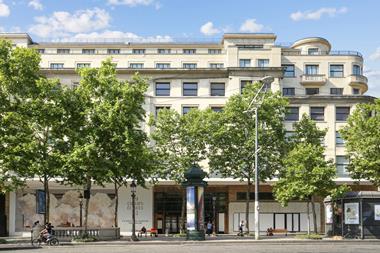PGIM Real Estate is forecasting a US recession for 2023, but that is not a reason to avoid the market, according to Catherine Marcus
The shift in sentiment around US commercial real estate last year was remarkably quick. Projections of tenant and investor demand that seemed realistic in the Spring were dashed by an unhealthy combination of rapidly rising interest rates against a backdrop of a fast-decelerating economy.

Our base case is now that the US will fall into a recession that will persist throughout 2023. Above target inflation will be met with a prolonged period of high interest rates. We anticipate a fall in commercial property values, deterioration in net operating income growth, higher cost of capital and liquidity to dry up.
Returns turned negative in the last half of 2022, but as compared with other asset classes real estate was resilient with positive full-year total returns. This relative resilience is creating difficult asset allocation decisions for some. Fixed income and equity markets have already sold off sharply, which means that asset allocation models that previously looked well diversified are suddenly imbalanced because the value of bond and equity holdings have declined while real estate holdings have held up on a relative basis.
But the signals of a slowing market are clear: prices have begun falling and transaction capitalisation rates are rising. The economic downturn presents two imminent challenges to real estate investors. Firstly, real estate may have started to correct but further valuation losses are imminent. Assets with flat income streams have been most susceptible to valuation losses in this rising rate environment, particularly in sectors with the lowest capitalisation rates. We are some way from the end of this rate hiking cycle, so it is not surprising that most of the repricing has been in appraisals for assets with long lease terms.
The second related challenge is with property types that rely on non-discretionary spending, which will get squeezed as the economy slows. The industrial sector, for instance, faces: a simultaneous rotation away from goods (on which many people splurged over the past two years); the pressure from rising rates and borrowing costs; and a temporary pullback in e-commerce shares of retail sales. As the economic tide turns, those investors with a broadly diversified portfolios that are not reliant on single growth factors, like consumer spending, stand to benefit on a relative basis.
These challenges are only just starting to manifest now in part because there are so few transactions taking place. During periods of uncertainty, property markets always struggle to find an equilibrium on pricing, because no one wants to buy or sell. The response of many real estate investors has been to press pause, putting ‘pencils down’ on new acquisitions or developments.
But that is not the approach we are taking. On the contrary, we see the current market conditions as an opportunity. Competition for the best quality assets and locations has been intense in recent years. It is now much easier to access these assets, and to do so on terms that are more favourable for our underlying clients.
At the moment it is not a case of whether opportunities exist, it is how much of a discount is enough because the market is still in price-discovery mode. We still believe structural growth drivers connected to the major forces changing society – demographics, digitalisation and decarbonisation – are the key to capturing positive real growth over the long term. These trends are going to continue to play out far beyond this market cycle and we remain laser-focused on opportunities to capitalise on them.
At the same time, the bar for committing capital is now much higher than it was. Asset class, stock and market selection are going to be even more critical. In recent years some property investors got into the habit of buying into generic trends, themes or stories. That was not good enough then but certainly will not be going forward. Investors need to be disciplined around investing in those structural drivers of growth that will deliver over the long term.
Equally, each investment case will need thorough scrutiny. Downside scenarios need to incorporate the kind of rent declines that happen during recessions. Expectations that seemed reasonable only a matter of months ago need revisiting, and we have to make pretty pessimistic assumptions around forecast returns.
Discipline and scrutiny are going to be the watchwords for real estate investing over the next two to three years. But the opportunities are there. Rather than ‘pencils down’ it is a case of ‘pencils sharpened’.


















